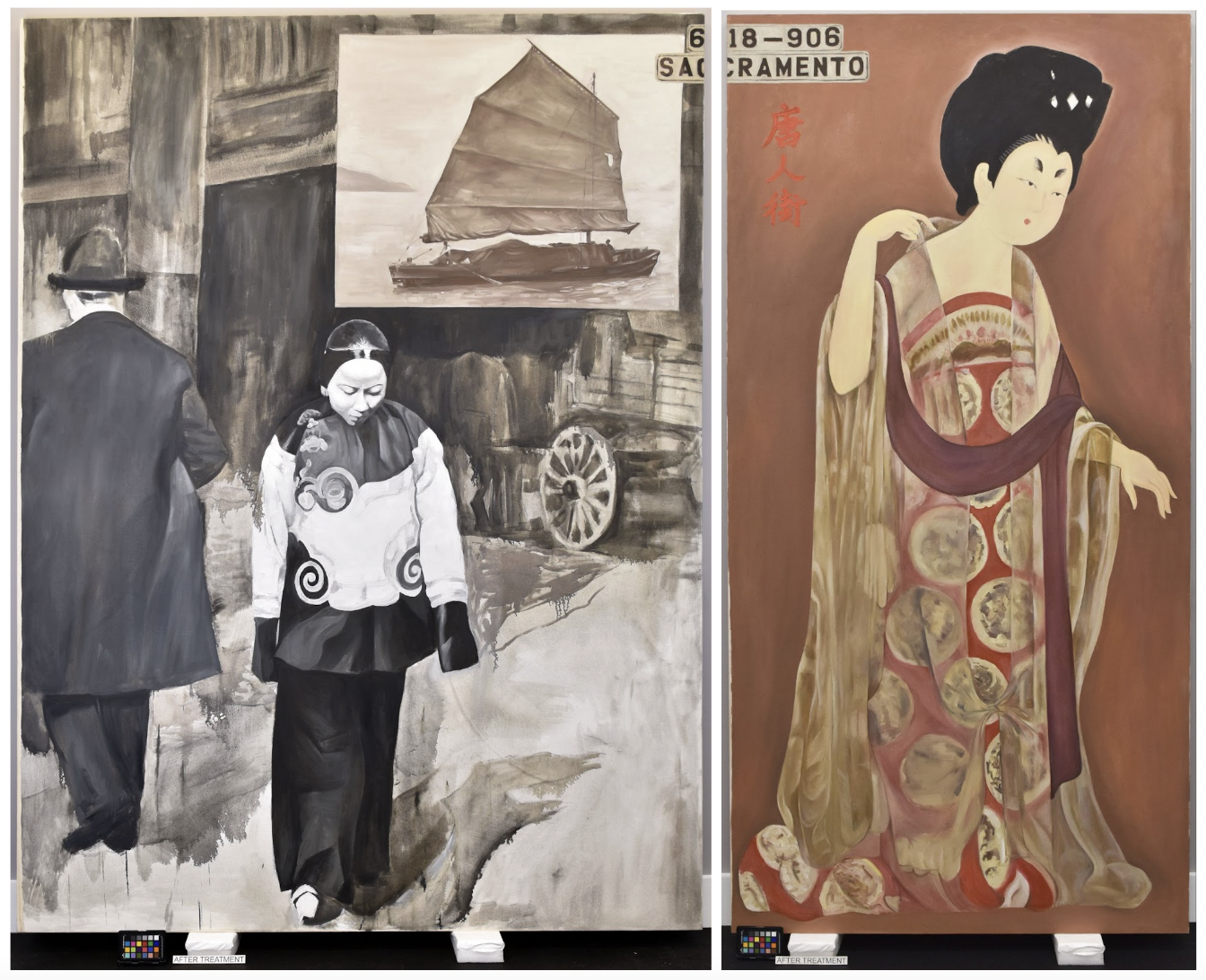Paintings Department: Hung Liu Estate
Installations by the Chinese American contemporary painter Hung Liu were recently exhibited at Rena Bransten Gallery in San Francisco; the exhibition focused on a body of work she created in 1988 during a residency at Capp Street Project. This large diptych, titled Tang Ren Jie (Tang People’s Street), 1988, is typically exhibited with a small stack of temple money on the floor in front of the painting. The right panel had a tear that was previously repaired and was visible on the recto of the canvas. After the exhibition, the Hung Liu Estate approached Preservation Arts to integrate the tear with a seamless approach. It’s been an absolute honor to work with the Hung Liu Estate to uphold the memory of the artist, a progressive contemporary painter who established herself as an icon in the Bay Area. The estate is dedicated to advancing scholarship and building the legacy of Hung Liu and is committed to advancing human rights.
Liu, who died in 2021, was a Chinese born American painter whose work reflected her experience of war, famine, and repression in revolutionary China. Her artwork often explored a mix between Chinese and Western traditions, as well as her own personal experience with the Cultural Revolution, depicting communities of the marginalized from migrants, to working class women, to people experiencing government prosecution and displacement. She used her paintings and installations as memorial sites, creating homages to those lives affected by struggle and otherwise forgotten. Liu received extensive honors and awards for her work during her life and posthumously, including fellowships from NEA and Joan Mitchell Foundation.
The painting came to the studio with a vertical tear approximately five inches long in the upper proper left corner. The tear had been previously repaired with a linen patch and heat activated adhesive film. The tear was not closed prior to the repair and was approximately ⅛ inch open and overpainted, and the adhesive used had discolored and was starting to fail. Once the repair patch was removed, a Trecker was used to bring the distorted tear back into tension. The Trecker is a tool that was developed by Professor Winfried Heiber to assist with pulling the edges of a gaping tear together to enable thread by thread treatment. The Trecker was attached to the stretcher and threads were temporarily adhered to the reverse of the tear edges. The threads are attached to the Trecker's tensioning device while tension was applied, encouraging the tear in the canvas to relax and slowly align. After weeks of slow micro adjustments and sustained tension, distortion of the gaping tear was reduced, and final treatment of integration of the painted surface could be completed.






